Photo: Wachiwit / Shutterstock.com
Encountering an error on your computer, especially the ominous Blue Screen of Death, can be quite exasperating. Specifically, you might be facing the issue labelled as Srttrail.txt. This problem likely occurred when you attempted to start your PC or when the computer was already in operation.
In this article, we have discussed what causes Srttrail.txt BSOD error and eleven ways to help you fix the error.
Below we have discussed:
What causes Srttrail.txt BSOD error?
The Srttrail.txt error usually happens when there’s a glitch in the Windows startup process. Typically, it occurs when the Automatic Repair tool can’t fix the startup hiccup and, in response, creates the Srttrail.txt log file to keep a record of what went wrong and the attempted fixes. The reasons that cause Srttrail.txt BSOD error might vary, but here are a a few common reasons that might cause this error:
- Hard drive issues.
- Malware infection.
- Corrupted system files.
- Failed Windows updates.
- Power failures.
Also read: Why can’t Windows 11 install programs?
How to fix the issue?
Here are a few troubleshooting methods to help you fix the issue:
Remove the battery
Trying a quick fix by removing your battery and putting it back in after a short break might fix the BSOD error. This little adjustment has proven effective for some users and could work for you, too. Reinsert the battery, plug in the power cable, and restart your system to check if the error has been fixed.
Remove all USB devices
Sometimes, problematic USB devices can contribute to the Srttrail.txt BSOD error. Before attempting other methods, disconnect all USB devices from your computer and restart to check if the error persists.
Boot in Safe Mode
Boot your PC into safe mode so you can perform the below-explained troubleshooting methods and fix the issue. Here’s how to do that:
Step 1: First, you will need a USB installation Media created using Windows Media Creation Tool.
Step 2: Plug in the USB and start your PC.
Step 3: Go to Repair your system > Advanced options > Troubleshoot > Advanced Options > Startup settings.
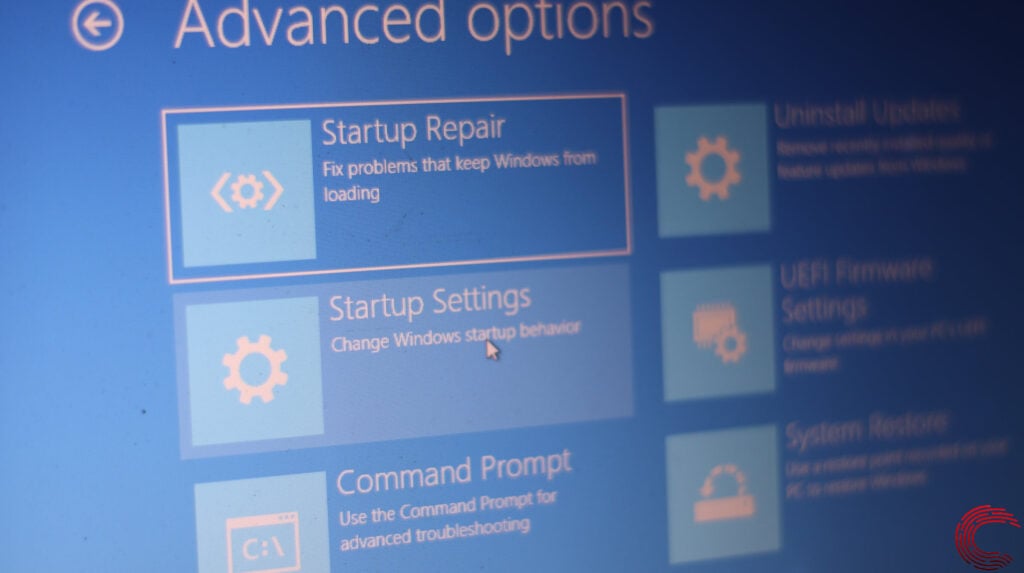
Step 4: Click on Restart.
Step 5: Press the F4 key to Enable Safe Mode after your PC restarts.
Step 6: Once you enter the safe mode, you can use the troubleshooting methods below.
Run SFC
There might be some corrupted or damaged files that are causing the Srttrail.txt BSOD error. Run an SFC scan to resolve the issue. Here are the steps to do that:
Step 1: Type Cmd in the Windows search and click on the Run as administrator option available on the right side.
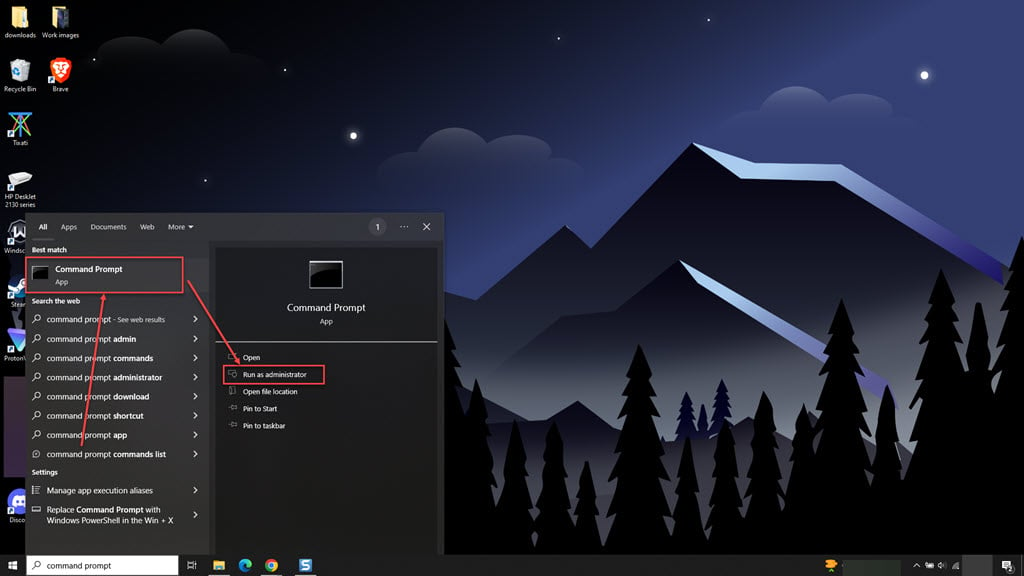
Step 2: Type sfc /scannow in the command prompt to run a system scan.
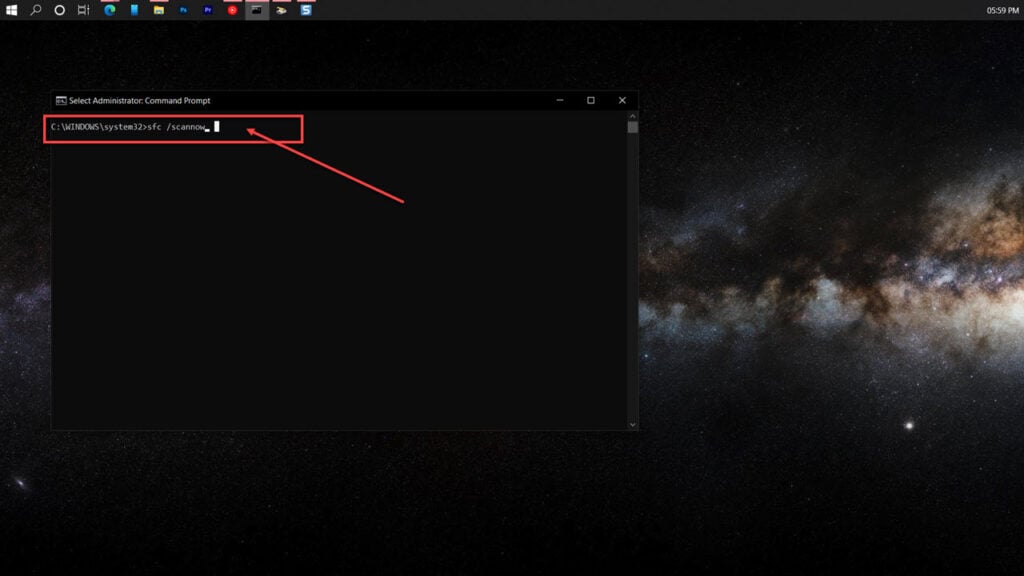
Perform a System Restore
When you initiate a system restore, it resets all the changes made in the Device Manager to their default settings. This includes alterations to system files, programs, drivers, registry settings, and more.
While this action may resolve the Srttrail.txt boot loop error, you might lose valuable data. Therefore, we recommend backing up your data before proceeding with this method. Here’s how to do it:
Step 1: Type System Restore in the Windows search and click on the Recovery option.
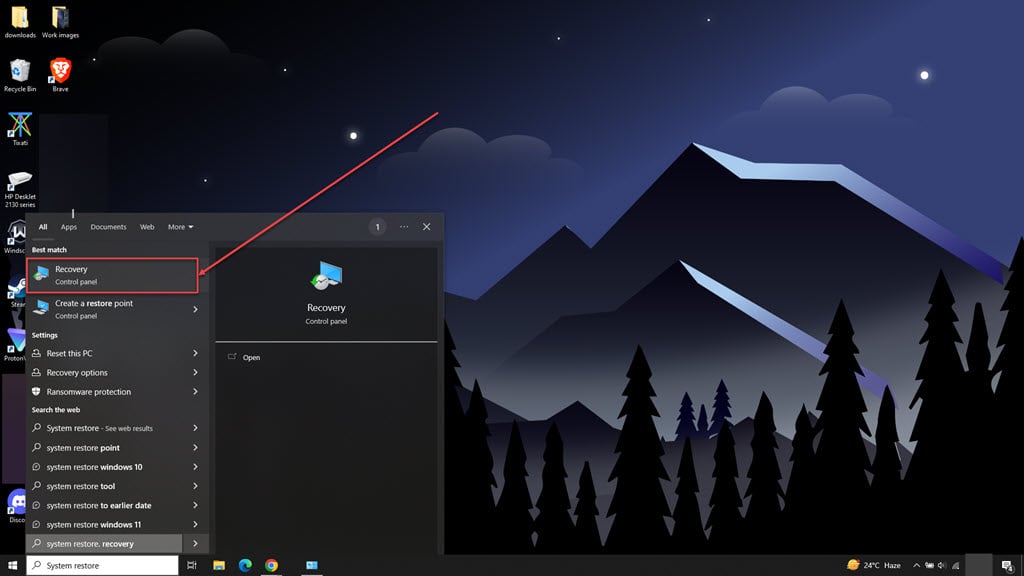
Step 2: In the new window, click on Open System Restore.

Step 3: In the System Restore window, click the Next button.
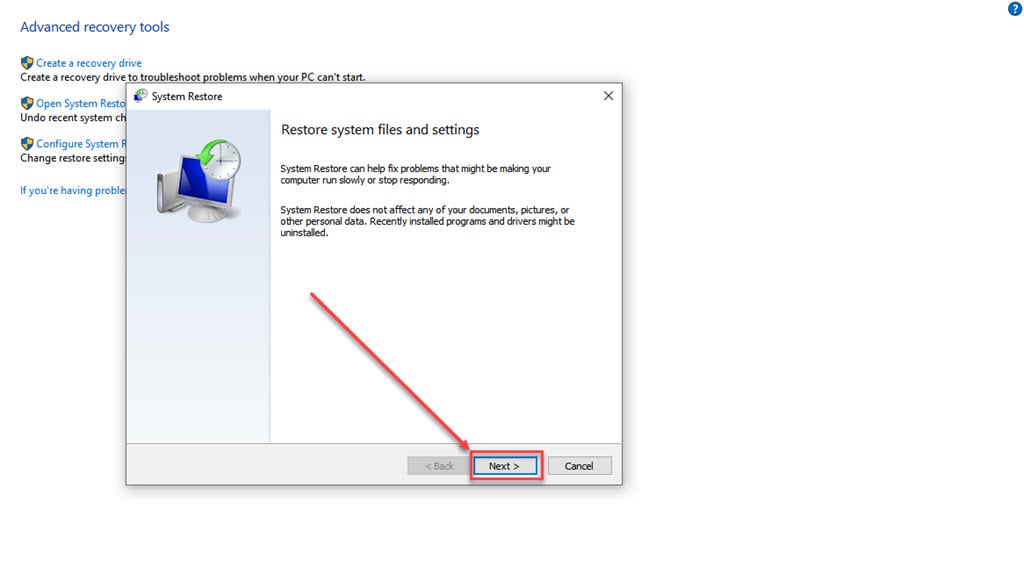
Step 4: Select the store point from the options and click Next.
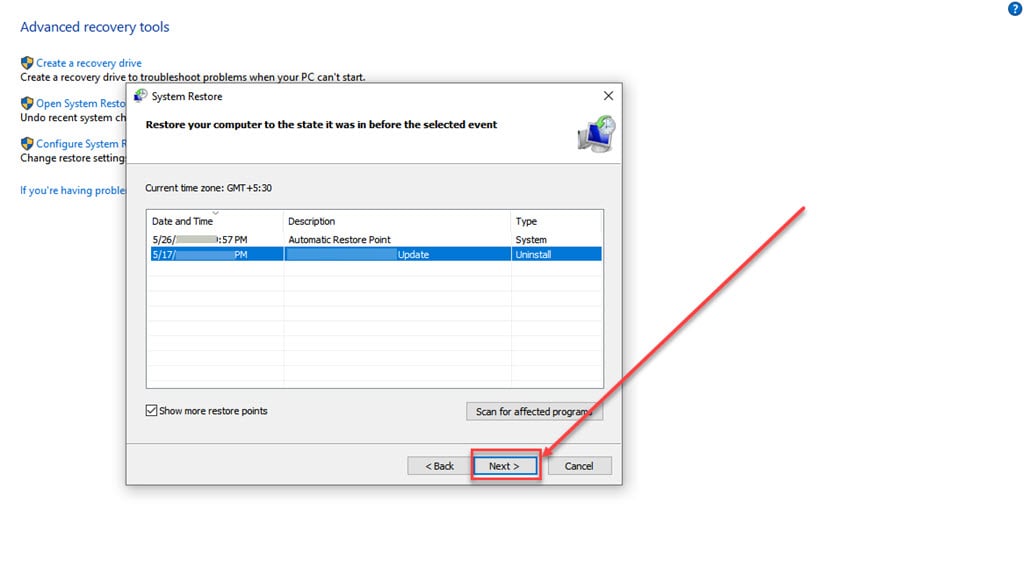
Step 5: Click on the Finish button.
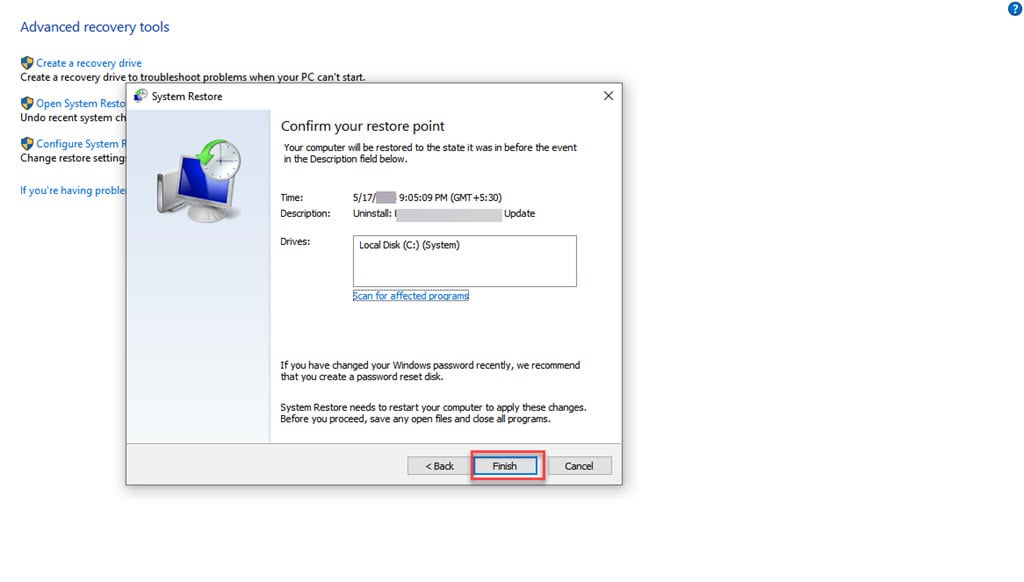
Let the system restore process complete.
Rebuild the Boot Configuration Data (BCD)
To rebuild the BCD, follow the steps below:
Step 1: Type Cmd in the Windows search and click on the Run as administrator option available on the right side.

Step 2: In the Command Prompt, run the following commands one by one:
- bootrec.exe /rebuildbcd
- bootrec.exe /fixmbr
- bootrec.exe /fixboot
Run CHKDSK
CHKDSK is a handy repair tool designed to detect and repair issues in your hard disk drive that could contribute to the error. You need to be aware of the letter assigned to your hard disk partitions to use it. To run CHKDSK follow the steps below:
Step 1: Type Cmd in the Windows search and click on the Run as administrator option available on the right side.

Step 2: In the command prompt, run the following commands one by one:
- chkdsk /r C:
- chkdsk /r D:
Restart your PC and check if the error is fixed.
Verify device Partition
The SrtTrail.txt error might be occurring because the values on your device partition are incorrect.
Step 1: Type Cmd in the Windows search and click on the Run as administrator option available on the right side.

Step 2: Type the command bcdedit and hit Enter. If the value shown on the screen is not partition=C: then run the following command to fix it:
- bcdedit /set {default} device partition=c:
- bcdedit /set {default} osdevice partition=c:
Step 3: Wait for the process to complete and restart your PC.
Repair corrupt Windows registry
A corrupt Windows registry can also cause the Srttrail.txt BSOD error. Follow the steps below to fix it:
Step 1: Type Cmd in the Windows search and click on the Run as administrator option available on the right side.

Step 2: In the command prompt, run the following commands one by one:
- C:windowssystem32configRegBack
- C:windowssystem32config
Reset the PC
Refreshing or resetting your PC can assist in resolving this error. It’s advisable to back up your data before trying this method to prevent any loss of important personal files and applications.
Step 1: Press the Windows + I keys on your keyboard to open the Windows Settings and click Update & Security.

Step 2: Click on the Recovery in the sidebar, and then on the right side of the screen, click on the Get Started button under Reset this PC section.

Step 3: Select Keep My Files if you want to save your data; otherwise, select Remove Everything.

Follow the on-screen instructions.
Perform a clean install
Suppose the Blue Screen of Death error continues even after trying all the solutions mentioned earlier. In that case, the final option is to do a clean installation of your Windows operating system.
Also read: How to fix Windows installation error 0x80300024?






